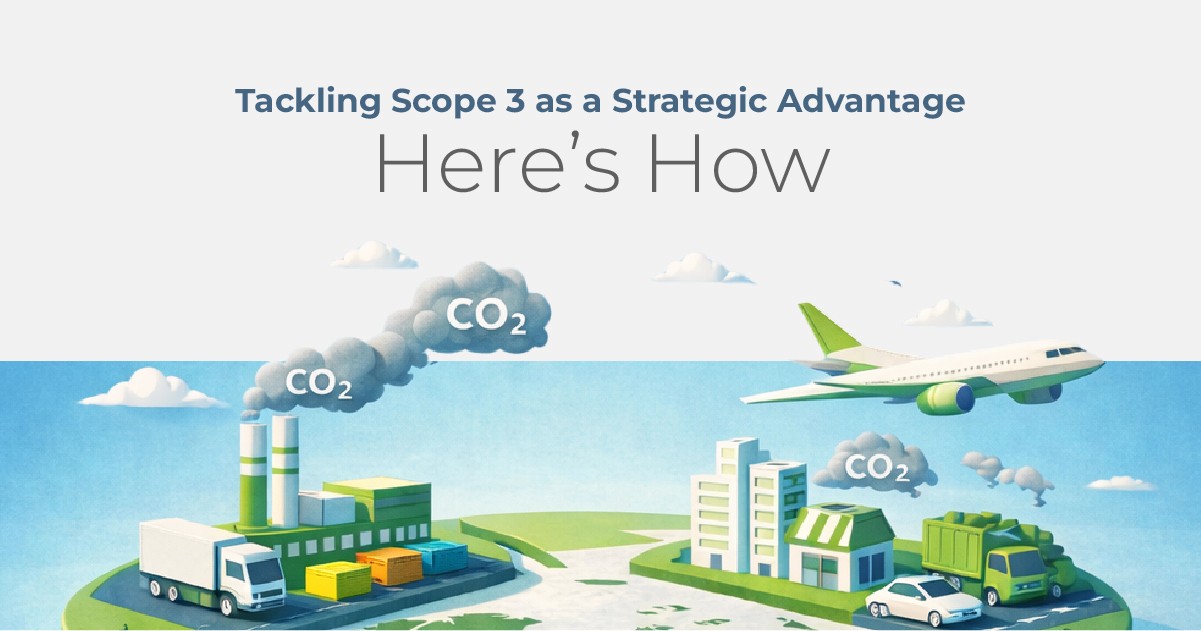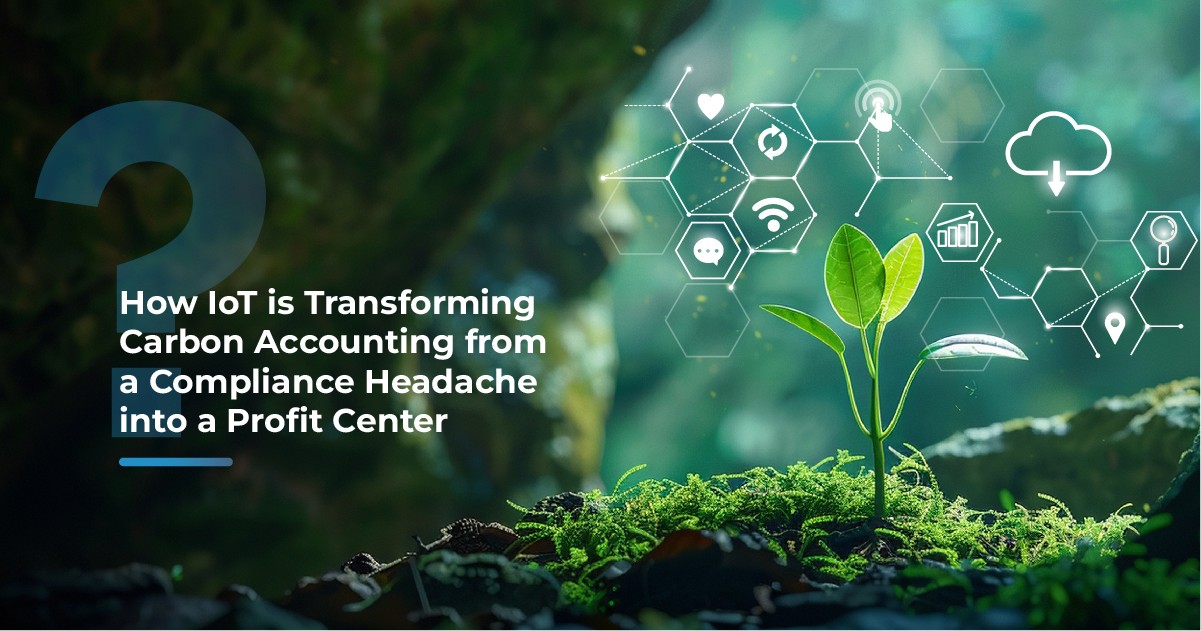Why Carbon Tracking Is Now a Business-Critical Function
In 2025, carbon tracking has shifted from a niche sustainability exercise to a core business function as critical as financial accounting or supply chain management. The reason is simple: carbon has become a cost and compliance metric.
According to CDP (Carbon Disclosure Project), over 23,000 companies now disclose their emissions, covering two-thirds of global market capitalisation.
The World Bank estimates carbon pricing initiatives now cover over 25% of global emissions, and this figure is rising rapidly.
Investors are also watching closely: Morningstar reported that over $30 trillion in assets globally are now ESG-linked, and companies with poor emissions disclosure are increasingly considered high risk.
Yet, most companies are still using outdated systems manual spreadsheets, emails, and scattered supplier documents to track emissions.
This approach is breaking down under pressure from new regulations and rising expectations:
The EU’s Carbon Border Adjustment Mechanism (CBAM) already requires quarterly emissions reporting for steel, aluminium, and other carbon-intensive imports moving to full carbon cost payments by 2026.
In India, SEBI’s BRSR framework now mandates ESG disclosures from the top 1,000 listed companies, pushing firms to report Scope 1, 2, and 3 emissions.
The EU’s CSRD, in force since 2024, demands audited, product-level ESG data from over 50,000 companies, including many non-EU suppliers.
This new regulatory complexity makes manual systems obsolete.
Spreadsheets can’t deliver real-time, verifiable, audit-ready carbon data across global supply chains. Errors, version conflicts, and missing data are no longer just operational headaches, they are legal and financial liabilities.
To survive and compete, companies must now replace fragmented manual tracking with automated, integrated carbon accounting systems that deliver accurate data at speed and scale.
How Automation Transforms Carbon Tracking
Moving from spreadsheets to automated systems doesn’t just make carbon tracking faster, it makes it more reliable, scalable, and insightful. Below is a clear look at how automation transforms the process compared to manual spreadsheet-based approaches:
Automation Capability | What It Does | Why It Matters |
Centralised, Accurate Data | Consolidates all carbon-related data from multiple departments and business units into a single platform. Includes built-in validation rules to flag errors or missing data. | Eliminates data silos and manual inconsistencies, ensuring everyone works from the same accurate source of truth. |
Real-Time Data Collection | Automatically pulls activity data (energy use, travel, procurement, logistics, etc.) from systems like ERP, finance, or utility APIs. | Provides timely updates on emissions instead of waiting for monthly or annual reports, enabling proactive action. |
Built-in Compliance Frameworks | Aligns calculations and reports with standards such as the GHG Protocol, CSRD, and SBTi targets by default. | Ensures your reporting is audit-ready and meets global sustainability disclosure requirements without manual cross-checking. |
Automated Emission Factor Updates | Continuously updates emission factors from verified databases and applies them to relevant data streams. | Removes the need to manually search and update spreadsheets every time a factor changes, reducing risk of outdated figures. |
Audit Trails & Version History | Tracks every change in data, methodology, or emission factors, and keeps historical versions intact. | Builds transparency and trust for external auditors, regulators, and internal teams critical for compliance and assurance. |
Dashboards & Analytics for Decision-Making | Visualises trends, hotspots, and forecasts with interactive dashboards and scenario modelling tools. | Turns raw data into actionable insights, helping leadership target the most impactful reduction opportunities. |
Scalability Across Global Operations | Designed to handle large volumes of data from multiple sites, countries, and suppliers without extra manual effort. | Supports organisational growth and complexity without overwhelming sustainability teams or creating bottlenecks. |
When Spreadsheets Still Work (and When They Don’t)

While spreadsheets are increasingly seen as outdated for carbon tracking, they still have a role in certain situations, especially in the early stages of a sustainability journey.
When spreadsheets can still work well:
Early-stage use cases or small teams
If you are just beginning to measure emissions and have only a handful of data sources (like electricity bills and employee travel), spreadsheets offer a simple, low-cost way to get started.One-off calculations or experiments
When running quick what-if analyses or testing out different carbon calculation methods, spreadsheets can be flexible and fast to use.
However, these advantages disappear quickly as your carbon accounting becomes more complex:
Multiple facilities, suppliers, and regions introduce large volumes of data from different sources.
Emission factors change frequently and must be applied consistently.
More stakeholders (finance, procurement, operations, ESG) need access to the same data.
Auditors and regulators require accurate, verifiable data with clear version histories.
At this stage, spreadsheets often become bottlenecks hard to manage, prone to errors, and slow to update, making it difficult to produce accurate reports or spot emissions hotspots in time.
That’s where automation becomes not just helpful, but essential.
Steps to Transition from Spreadsheets to Automation

Making the move from spreadsheets to an automated carbon tracking system can feel daunting—but with a structured approach, it’s manageable and highly rewarding.
Here’s a clear roadmap to follow:
Map All Emission Data Sources
List every source of emissions data: energy consumption, fuel use, travel, procurement, logistics, suppliers, etc.
Identify where this data lives (systems, departments, formats).
Audit and Clean Current Data
Standardise units, formats, and naming conventions.
Fill gaps, correct inconsistencies, and remove duplicates.
This ensures the new system starts with clean, reliable data.
Choose the Right Carbon Accounting Platform
Evaluate tools based on integration capabilities, methodology support (GHG Protocol, CSRD, SBTi), data security, user experience, cost, and scalability.
Involve both IT and sustainability teams in selection.
Pilot Automation with Limited Scope
Start small (e.g., one facility or only scope 1 and 2 emissions).
Test integrations, data flows, and reporting outputs before rolling out company-wide.
Train Teams and Align Stakeholders
Conduct training for sustainability, finance, operations, and procurement teams.
Clearly explain new processes, responsibilities, and how the tool fits into ESG goals.
Set Up Governance, Checks, and Audit Processes
Establish validation rules, approval workflows, and audit logs.
Assign ownership for data accuracy, updates, and oversight.
Scale Up Gradually and Continuously Improve
Expand the system to cover more sites, more scopes (especially scope 3), and more suppliers.
Regularly review the data, monitor regulatory changes, and update processes as you grow.
Challenges to Expect (and How to Overcome Them)
Shifting from spreadsheets to an automated carbon tracking system delivers huge long-term benefits but it’s not without hurdles. Knowing these challenges in advance helps you plan, budget, and manage expectations.
Here are the common challenges you might face and how to overcome them:
1. Data Quality and Completeness
The challenge: Most organisations discover that their existing emissions data is fragmented, inconsistent, or incomplete when they first attempt automation.
How to overcome it:
Conduct a data audit early.
Define standard formats, units, and naming conventions.
Assign clear ownership for data entry and validation within each department.
Use automated validation rules (within the platform) to catch errors at the source.
2. Integration with Existing Systems
The challenge: Emissions data is often spread across finance systems, procurement tools, utility bills, travel platforms, and supplier reports and connecting these can be complex.
How to overcome it:
Start by integrating only the most critical data sources (energy, travel, procurement).
Choose a platform with robust APIs and pre-built connectors.
Involve your IT team early to handle security, permissions, and infrastructure concerns.
3. Budget and ROI Concerns
The challenge: Automation platforms have upfront costs, and leadership may hesitate to invest without a clear return.
How to overcome it:
Build a business case showing time saved, error reduction, and compliance risk avoided.
Highlight the reputational value of accurate sustainability reporting.
Start with a small pilot to demonstrate tangible value before scaling up.
4. Change Management and Training
The challenge: Teams accustomed to spreadsheets may resist switching systems or lack the skills to use new tools.
How to overcome it:
Provide role-based training sessions and clear user guides.
Show how automation reduces manual work and frees time for strategic tasks.
Celebrate quick wins to build buy-in across the organisation.
5. Keeping Up with Regulatory Changes
The challenge: Sustainability reporting frameworks (CSRD, IFRS, SBTi) evolve frequently — and non-compliance carries real risks.
How to overcome it:
Select a platform that actively updates methodologies and emission factors as regulations change.
Assign someone to monitor ESG regulations and coordinate updates internally.
Schedule periodic reviews of your methodology and reporting outputs.
Business Benefits of Automation

Moving beyond spreadsheets isn’t just about reducing errors or improving data accuracy — it’s about unlocking strategic, financial, and operational value. Automated carbon tracking gives organizations the tools they need to move faster, act smarter, and stay compliant in an evolving ESG landscape.
Here are the key benefits:
1. Major Time and Cost Savings
Less manual data entry: Automated data feeds replace countless hours of copying and pasting into spreadsheets.
Fewer consultant hours: Built-in emission factors and templates reduce reliance on external experts.
Faster reporting cycles: What once took weeks can often be completed in days.
Result: Teams can focus on strategy, not administration — reducing overhead costs and freeing capacity.
2. Improved Accuracy and Credibility
Standardised methodologies applied consistently across all sites, scopes, and business units.
Built-in error checks prevent duplicates, missing fields, or unit mismatches.
Audit trails allow you to prove exactly how each number was calculated.
Result: Stakeholders and auditors trust your data reducing risk and building confidence.
3. Easier Compliance and Assurance
Automatic alignment with frameworks like GHG Protocol, CSRD, SBTi, and IFRS sustainability standards.
Centralised documentation simplifies external audits and assurance reviews.
Result: Lower compliance risk, less stress during audits, and readiness for evolving disclosure rules.
4. Faster Insights and Better Decisions
Real-time dashboards track emissions trends and hotspots.
Scenario modelling tools forecast the impact of changes (e.g. switching to renewable energy, optimizing logistics routes).
Result: Leaders get the insights they need to act quickly, allocate resources effectively, and hit climate targets sooner.
5. Scalability Across Global Operations
Handles large data volumes from multiple facilities, suppliers, and regions.
Expands easily to include Scope 3 emissions without massive manual effort.
Result: Your carbon accounting grows with your business instead of becoming a bottleneck.
Building a Smarter Future with Automation
The journey toward sustainability is full of opportunities and automation makes that journey faster, easier, and more impactful. By moving beyond spreadsheets, organisations can unlock real-time data, streamlined reporting, and powerful insights that drive meaningful change.
Automation doesn’t just simplify carbon tracking, it empowers teams, accelerates decisions, and amplifies results. With accurate data at your fingertips, you can confidently set ambitious climate goals and achieve them.
Now is the perfect moment to embrace innovation. Start small, grow steadily, and watch your sustainability efforts transform into a strategic advantage.





